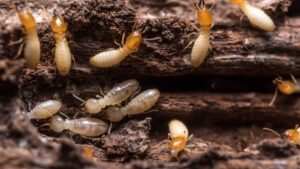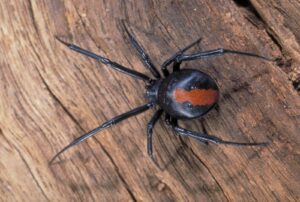The European Starling (Sturnus vulgaris)
The European Starling (Sturnus vulgaris), known commonly as the Common Starling or simply the Starling, is a familiar sight in many parts of the world, including Central Coast and Lake Macquarie in New South Wales, Australia. These social and intelligent birds, while fascinating, can sometimes become a nuisance due to their nesting habits. This blog post will explore the biology, behaviour, and impacts of the European Starling and suggest some strategies for managing them, especially after the nesting season.
Understanding the European Starling:
- Size: European Starlings are medium-sized birds, about 20 cm in length.
- Color: They are dark and glossy, with a metallic sheen that appears purple or green depending on the light. In winter, they sport white spots.
- Habitat: European Starlings are highly adaptable and can be found in a wide range of habitats, including urban and suburban areas where they often nest in buildings.
Behaviour and Nesting Habits:
European Starlings are cavity nesters and will readily take advantage of any suitable space. This often leads them to build nests in and around homes, including in roof spaces, vents, and other small openings. Their nests are made from a variety of materials, including grass, twigs, and other debris, and can be a fire hazard if built near electrical installations.
As native animals, European Starlings are protected by law, meaning they cannot be harmed or removed during the nesting season. This can make managing them a challenge, especially when they decide to nest in inconvenient locations. However, there are strategies that homeowners can employ to prevent them from coming back once the nesting season is over.
Managing European Starlings Post-Nesting Season:
- Block Access Points: After the nesting season, and once you’re sure there are no remaining starlings or chicks, block off potential nest sites with bird-proofing materials. This may involve sealing off vents and gaps, or installing bird mesh over larger openings.
- Install Deterrents: Visual and auditory deterrents, such as reflective tape, wind chimes, or even bird-of-prey decoys, can discourage starlings from returning to nest.
- Prune Overhanging Branches: Starlings, like many birds, prefer to nest near cover. Pruning overhanging branches can make your home less appealing to them.
- Regular Cleaning: Regularly cleaning potential nesting areas can also deter starlings. They prefer to nest in areas where there’s an existing buildup of nesting material, so keeping these areas clean can make them less attractive.
- Professional Assistance: If you’re unsure about how to manage starlings, or if they’ve become a significant problem, it may be worth seeking professional help. Pest management professionals can provide advice and assistance tailored to your specific situation.
Remember, it’s important to wait until the nesting season is over, and there are no remaining birds, before attempting to clear nests or block access points. Interfering with active nests is not only illegal, it can also be harmful to the birds.
Conclusion:
While they can sometimes be a nuisance, European Starlings are also a fascinating part of our local fauna. Their social behaviour, complex vocalizations, and iridescent plumage make them a delight to observe. However, their propensity for nesting in buildings can sometimes bring them into conflict with people.
Through understanding their behaviour and using appropriate management strategies, it’s possible to coexist peacefully with these native birds. So next time you see a flock of starlings wheeling overhead in the evening sky, spare a thought for these adaptable and resilient birds who, just like us, have made a home in the Central Coast and Lake Macquarie region.
In the grand scheme of things, Starlings are an important part of our ecosystem. They assist in controlling insect populations, as they feed on a range of invertebrates, and they contribute to the dispersion of seeds, aiding in the propagation of various plant species. Their charming song, often composed of a medley of sounds and mimicked noises, is a pleasant soundtrack to many an Australian evening.
That being said, it’s understandable that their nesting habits can cause issues for homeowners and businesses. Remember, it’s about finding balance and understanding that these creatures are simply trying to survive, just as we are.
Educating ourselves about the species, understanding their habits and behaviours, is the first step towards finding that balance. The next step is taking action – preventative measures that discourage starlings from nesting in our homes and buildings. In doing so, we can ensure the safety and integrity of our homes while allowing the starlings to go about their natural behaviours.
Consider the solutions mentioned earlier: blocking access points, installing deterrents, pruning overhanging branches, regular cleaning, and seeking professional assistance when needed. These are all practical and humane ways to deal with the situation. They do not harm the birds and yet, they protect your property from potential damage.
Respect for our local wildlife and understanding the essential role they play in the ecosystem is crucial. It’s about cohabitation and finding ways to live alongside these creatures. After all, we share this beautiful corner of the world with them.
If you’re facing a persistent issue with European Starlings, don’t hesitate to seek professional help. Pest control services are not just about ‘controlling’ pests. They’re about management and prevention, about educating people, and promoting a more harmonious existence between humans and animals.
Remember, it’s always important to act in accordance with local wildlife laws and regulations. These laws are in place for a reason – to protect our native wildlife, ensuring that they will be here for generations to come.
In conclusion, dealing with European Starlings can be a challenge, but with the right approach and mindset, it’s a challenge we can meet. By understanding these birds, we can learn to appreciate them for what they are – an integral part of our local biodiversity. And through effective management strategies, we can ensure that our homes and buildings are protected, creating a win-win situation for both humans and starlings.
As the saying goes, “In every walk with nature, one receives far more than he seeks.” Let’s continue to walk that walk, learning, understanding, and adapting, for a better, more harmonious future for all.







